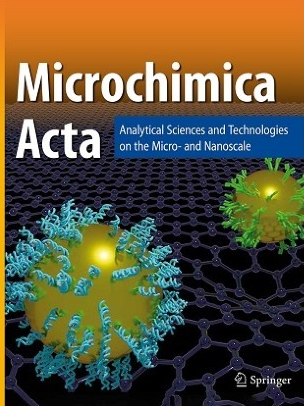Electrophoresis-based electrochemical sensor for rapid detection of sialic acid in human serum
Abstract
A novel electrochemical sensor is introduced that significantly accelerates sialic acid (SA) detection by utilizing an electrophoresis device, which reduces the binding time from 20 to 5 min. The results indicate that the current signal change (ΔI) of the sensor is more than twofold higher than that of conventional sensors after 5 min. Furthermore, to enhance the intensity of the sensor’s signal and simplify the operational procedure, we employed a method that electrochemically reduces graphene oxide/3-aminophenylboronic acid (GO/APBA) to reduced graphene oxide/3-aminophenylboronic acid (rGO/APBA) in a single step. This reduction process effectively removes some oxygen groups from GO, further enhancing the current signal. The linear detection range for SA was between 0.1 mM and 3 mM, with a detection limit of 0.084 mM (S/N = 3). Notably, the electrophoresis-enhanced sensor can successfully detect SA in actual human serum samples. Overall, this sensor represents a significant advancement in the electrochemical sensing of SA, providing a rapid, selective, and cost-effective approach for developing electric field-enhanced detection technologies.
Graphical Abstract

 求助内容:
求助内容: 应助结果提醒方式:
应助结果提醒方式:


